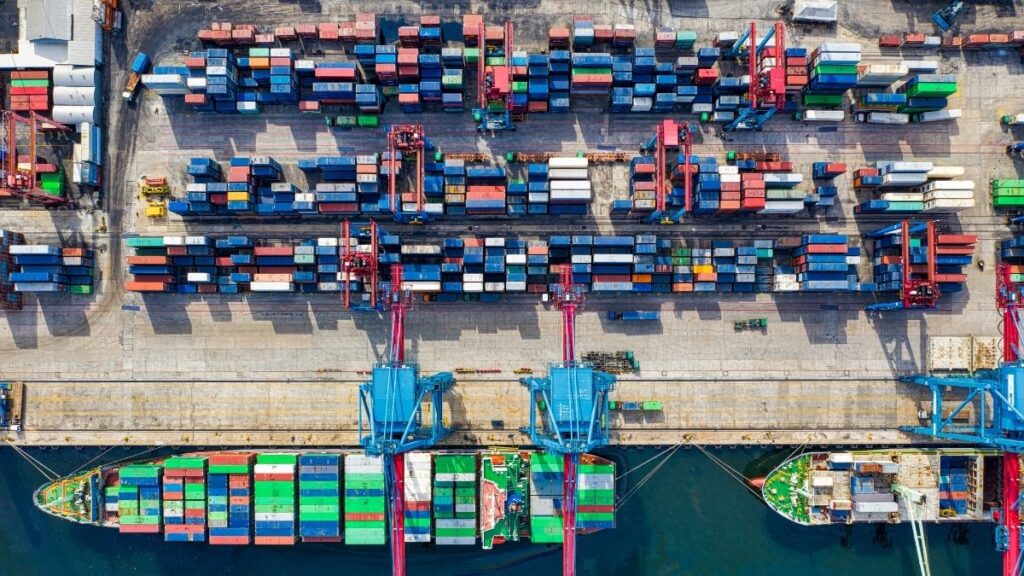The DHL Global Connectedness Report 2024 shows that despite various global challenges, such as the pandemic, conflicts, and trade disputes, globalization reached new heights in 2022 and remained stable in 2023.
This contradicts the idea of a decline in global connections. Trade growth played a crucial role, with global output traded internationally peaking in 2022. Although there was a minor decline in 2023, the trend is expected to accelerate again in 2024.
India’s Rising Role in Globalization
The latest DHL Global Connectedness Report highlighted India as a key player in global development, ranking it 62nd out of 181 economies in terms of globalization. This ranking is based on how India engages in international trade, capital flow, information exchange, and people movement. India is ranked 16th globally for the breadth of its international connections, showing how far its trade reaches. But it’s ranked 161st for the depth of these connections relative to its domestic activity, indicating how widespread its imports and exports are across global markets.
The report explains that large countries like India tend to have more internal economic activity, resulting in lower depth scores. However, they also have the capacity to establish connections with many countries worldwide, leading to higher breadth scores. For instance, the US is 2nd in breadth but 122nd in depth, ranking 44th overall. Similarly, China ranks 23rd in breadth and 171st in depth, resulting in an overall rank of 80th.
Additionally, the DHL Trade Growth Atlas 2022 identified India as one of the top three countries expected to show significant growth in trade volume and speed between 2021 and 2026. Forecasts indicate India’s continued strong trade growth, with growing international investment in its manufacturing sector indicating a rising integration into global supply chains.
India’s Strength in Global Capital Flows
In the DHL Global Connectedness Index, India shines in capital flows, ranking 35th out of 159 countries. This is largely attributed to the robustness and diversity of India’s announced greenfield foreign direct investment (FDI), mergers and acquisitions, and portfolio equity investment.
The report notes that India’s current connectedness aligns with expectations, but as its economy grows, expectations for its connectedness are set to rise rapidly in the coming years. A more globally connected India would not only bolster its own growth and development but also establish it as a crucial partner for international flows in other countries.
Businesses worldwide are increasingly eyeing expansion opportunities in India. This is driven by India’s promising growth prospects and efforts to diversify supply chains away from China (“China + 1 strategies”). The report highlights a surge in the value of announced greenfield FDI projects in India by foreign companies in 2022, followed by a smaller increase in 2023. In fact, in 2023, India attracted more greenfield FDI investments than any other country except the United States.
Insights from the DHL Global Connectedness Report 2024
According to the report, Singapore is the world’s most globalized country, followed by the Netherlands and Ireland. It highlights that 143 countries are becoming more globally connected, while only 38 are experiencing a decline in connectivity. Europe leads as the most globally connected region, followed by North America, the Middle East, and North Africa.
Despite this, US-China relations continue to weaken, with both countries seeing a 25% decrease in their flows to each other since 2016. However, they still maintain significant connections, surpassing most other pairs of nations in terms of flow volume. Meanwhile, Russia and Europe have drifted apart, causing Russia to experience a sharp decline in connectedness – the largest drop among the world’s 20 largest economies.
Contrary to predictions, the report suggests that a shift from globalization to regionalization is not evident in international flow patterns, at least not yet. Most international flows occur over the same or even longer distances. Only North America shows a clear trend towards more regionalized trade patterns.
Also Read: ‘OpenAI is a Lie’: Elon Musk Mocks Sam Altman’s OpenAI with New Logo on X
Vishal Mega Mart Planning $1 Billion IPO, Investment Banks Set to Pitch This Week
Byju Crisis: 14,000 Employees to WFH as Byju’s Shuts All Offices Except HQ
